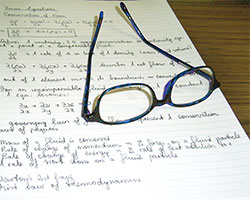 Definition
Definition
This module will help you to:
According to the Canadian National Institute for the Blind (2003), the legal definition for a vision loss is defined as “a visual acuity of 6/60 (20/200) or less in the better eye after correction (i.e. with glasses or contact lenses) and/or a visual field of no greater than 20 degrees.”
Although blindness is a disability in which risk factors increase mainly with age, there are many causes of blindness among students. Maberley et al. (2006) states the vision loss may be largely attributable to congenital factors, such as heredity, infections contracted by the mother before birth, or damage to the structure of the eye during the fetal development period, cataracts, atrophy of the optic nerve, prematurity and low birth weight.
Vision loss is difficult to conceptualize because vision may differ from one person to another. Even though two people have the identical ocular pathology, it may impact their vision differently.
According to the International Classification of Diseases1 (ICD-10), there are four levels of visual function:
In Canada, normal vision is defined as 20/20 (6/6), and legal blindness as worse than or equal to 20/200 (6/60) with best correction in the better eye or a visual field extent of less than 20 degrees in diameter.2 The definition of legal blindness may vary among countries.
The expressions “functionally sighted” and “functionally blind" are commonly heard in a postsecondary setting, depending on the method used for reading and writing (Braille or black type). The functionally blind use Braille, whereas the functionally sighted use black type. Some examples of different types of pathologies of the functionally sighted include central or tunnel vision, peripheral vision with loss of central vision, blurred vision, vision with spots, and total blindness.